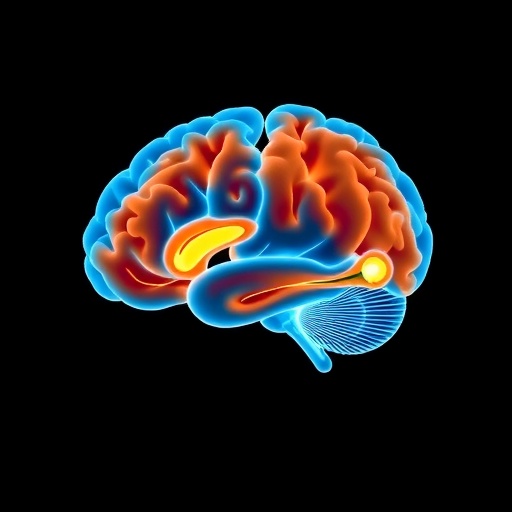In recent years, the scientific community has increasingly recognized the profound impact of maternal nutrition on fetal brain development, underscoring the significance of specific micronutrients in influencing early neurodevelopmental trajectories. Among these vital micronutrients, phylloquinone—commonly known as vitamin K1—has emerged as a focal point due to its underexplored yet potentially critical role in neurodevelopmental processes during gestation. A groundbreaking study delving into this link has shed light on how maternal dietary intake of phylloquinone during pregnancy correlates with cognitive and neurological outcomes in early childhood, illuminating new avenues in prenatal care and nutritional recommendations.
Phylloquinone, predominantly sourced from green leafy vegetables and certain plant oils, has long been established for its central function in coagulation. However, emerging biochemical insights have identified its involvement in sphingolipid metabolism—lipids essential for neuronal signaling and brain cell membrane integrity. This dual role posits phylloquinone as more than merely a hemostatic factor; it could potentially be instrumental in molding the structural and functional foundations of the developing brain, particularly during the critical windows of neuronal proliferation and synaptogenesis occurring in utero.
The study rigorously evaluated maternal dietary phylloquinone intake through validated food frequency questionnaires administered throughout gestation, correlating these data with standardized neurodevelopmental assessments of offspring at early childhood stages. These assessments measured parameters such as cognitive function, motor skills, and language acquisition, employing internationally recognized neurodevelopmental scales to ensure cross-cohort applicability and robustness of findings. Statistical analyses accounted for a multitude of confounders, including socioeconomic status, maternal age, and overall dietary quality, thereby enhancing the specificity of the observed associations.
Intriguingly, results revealed a positive correlation between higher maternal phylloquinone consumption and improved scores in several domains of early childhood neurodevelopment. Children born to mothers with elevated phylloquinone intake exhibited more advanced cognitive processing capabilities, superior fine and gross motor coordination, and accelerated language development milestones compared to peers whose mothers had lower vitamin K1 consumption. These findings compel a reevaluation of current prenatal nutritional guidelines, which seldom emphasize phylloquinone beyond its traditional role.
From a mechanistic standpoint, the neurobiological functions of phylloquinone may be attributed to its facilitation of γ-carboxylation processes critical for the activation of vitamin K–dependent proteins involved in neuronal survival and plasticity. The study’s authors hypothesize that adequate maternal phylloquinone availability ensures optimal synthesis of these proteins, thereby fostering healthier neural networks and synaptic efficiency in the developing fetal brain. This biochemical nexus opens compelling research trajectories aimed at dissecting vitamin K1’s molecular influence on neurogenesis.
Importantly, the investigation also unveiled a dose-response relationship, indicating that marginal increases in maternal phylloquinone intake yielded proportionate enhancements in neurodevelopmental outcomes. This observation emphasizes the therapeutic potential of dietary modulation during pregnancy, highlighting how even modest nutritional interventions could translate into substantial developmental benefits. Nonetheless, the authors caution that further research is essential to delineate precise intake thresholds and to understand possible interactions with other essential nutrients.
The broader implications of these findings resonate with public health initiatives focused on reducing developmental delays and neurocognitive disorders through early-life interventions. By drawing attention to a vitamin traditionally underrecognized in neurodevelopmental contexts, this work advocates for integrative nutritional strategies encompassing vitamin K1 to optimize prenatal care frameworks. Enhancing maternal diets with phylloquinone-rich foods could emerge as a straightforward, cost-effective measure to improve childhood neurodevelopmental trajectories on a population scale.
A notable strength of the study was its longitudinal design, tracking developmental outcomes over several years, which lends temporal validity to the inferred causal relationships. Additionally, the meticulous control for confounding variables enhances confidence that phylloquinone intake specifically, rather than overall dietary patterns or other lifestyle factors, drives the observed neurodevelopmental benefits. This rigorous methodology exemplifies the caliber of evidence necessary to inform clinical and policy shifts in maternal nutrition.
Notwithstanding the robust findings, the investigators acknowledge certain limitations, such as reliance on self-reported dietary data, which may introduce recall bias, and the observational design precludes definitive causal inferences. Consequently, they advocate for randomized controlled trials to validate phylloquinone’s neurodevelopmental effects and to clarify optimal supplementation dosages and timing. Such trials would critically advance understanding and guide evidence-based dietary recommendations for expectant mothers.
Furthermore, this research invites a multidisciplinary dialogue integrating obstetrics, nutrition science, neurodevelopmental psychology, and molecular biology to fully appreciate the complexities of micronutrient influence on brain maturation. Understanding how maternal phylloquinone interfaces with genetic factors, epigenetic modifications, and environmental exposures promises to yield comprehensive models of prenatal brain development, ultimately informing tailored interventions to mitigate neurodevelopmental risk.
In conclusion, the study’s revelations about maternal phylloquinone intake and early childhood neurodevelopment represent a significant leap forward in prenatal nutrition science. By illuminating vitamin K1’s potential as a modifiable determinant of brain health, it challenges prevailing narratives and elevates the discourse on maternal dietary recommendations. As further research unfolds, the prospect of strategically harnessing phylloquinone to promote optimal neural outcomes in offspring holds transformative promise for future generations.
This pivotal investigation not only enriches our understanding of nutrient-brain interrelations but also underscores the enduring importance of maternal nutrition as a cornerstone of pediatric health. As the scientific community continues unraveling the intricate web of gestational factors shaping lifelong cognitive trajectories, phylloquinone stands poised to emerge as a key player deserving of clinical attention and public health advocacy. Ultimately, empowering mothers with evidence-based nutritional guidance can catalyze a ripple effect, enhancing neurodevelopmental resilience and cognitive potential globally.
Subject of Research:
Maternal dietary phylloquinone (vitamin K1) intake during pregnancy and its associations with early childhood neurodevelopment.
Article Title:
Maternal dietary phylloquinone intake (vitamin K1) and early childhood neurodevelopment.
Article References:
Mateu-Fabregat, J., Panisello, L., Novau-Ferré, N. et al. Maternal dietary phylloquinone intake (vitamin K1) and early childhood neurodevelopment. Pediatr Res (2025). https://doi.org/10.1038/s41390-025-04543-7
Image Credits:
AI Generated




